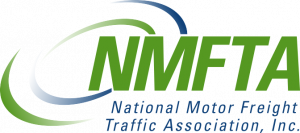SCAC Code Lookup Ultimate Guide : Streamline Carrier Identification Effortlessly
SCAC Code Lookup Introduction:
In the fast-paced world of logistics and transportation, accurate and efficient carrier identification is paramount for seamless operations. Enter the Standard Carrier Alpha Code (SCAC) lookup—an invaluable tool that simplifies the process of identifying carriers and their associated SCAC codes. In this comprehensive guide, we will explore the ins and outs of SCAC code lookup, its significance in the industry, and how you can leverage it to streamline your carrier identification process.

Understanding SCAC Codes and their Importance:
The Standard Carrier Alpha Code (SCAC) is a unique two-to-four-letter code assigned by the National Motor Freight Traffic Association (NMFTA) to carriers operating in various transportation modes. SCAC codes play a vital role in the logistics industry by enabling carriers to communicate essential information, generate transportation documents, and ensure accurate billing and tracking throughout the supply chain.
SCAC Code Lookup: Simplifying Carrier Identification:
SCAC code lookup is a powerful tool that allows businesses to swiftly identify carriers and retrieve their associated SCAC codes. With an extensive range of online platforms and tools available, performing an SCAC code lookup has never been easier. By simply inputting the carrier’s name, location, or other identifying information, businesses can obtain the correct SCAC code necessary for documentation, communication, and compliance purposes.
Benefits of SCAC Code Lookup:
- Streamlined Operations: SCAC code lookup eliminates the need for manual searches through lengthy directories or contacting carriers individually. This expedites the carrier identification process, saving valuable time and resources.
- Accurate Documentation: When generating shipping labels, bills of lading, or other transportation documents, using the correct SCAC code is crucial for accurate documentation. SCAC code lookup ensures the accuracy of these vital documents, reducing the risk of errors and improving operational efficiency.
- Regulatory Compliance: Certain regulations and industry requirements mandate the use of specific SCAC codes for particular shipments. By leveraging SCAC code lookup, businesses can ensure compliance with these regulations, avoiding penalties and delays.
- Enhanced Communication: Clear and effective communication is vital in the logistics industry. SCAC code lookup allows businesses to quickly retrieve the correct SCAC code, facilitating seamless communication with carriers, suppliers, and customers.

Best Practices for SCAC Code Lookup:
To optimize your experience with SCAC code lookup, consider the following best practices:
- Utilize Reliable Online Platforms: Choose reputable online platforms or tools that provide accurate and up-to-date SCAC code information. Verify the credibility of the source before relying on the information provided.
- Double-Check Accuracy: When performing an SCAC code lookup, double-check the accuracy of the carrier’s name, location, or other identifying details to ensure the retrieved SCAC code corresponds to the correct carrier.
- Stay Updated: Regularly update your SCAC code database to reflect any changes or updates in the industry. This ensures that you are working with the most recent and accurate information.
- Validate SCAC Codes: Once you retrieve an SCAC code through lookup, verify its authenticity and validity. Cross-reference it with official NMFTA sources or carrier databases to ensure accuracy.
Conclusion:
Efficient carrier identification is vital for the smooth functioning of logistics and transportation operations. SCAC code lookup simplifies the process, allowing businesses to swiftly identify carriers and retrieve their associated SCAC codes. By leveraging this invaluable tool, you can streamline operations, ensure accurate documentation, comply with industry regulations, and foster effective communication within the supply chain. Incorporate SCAC code lookup into your workflows to maximize efficiency, improve accuracy, and stay ahead in the competitive logistics landscape.